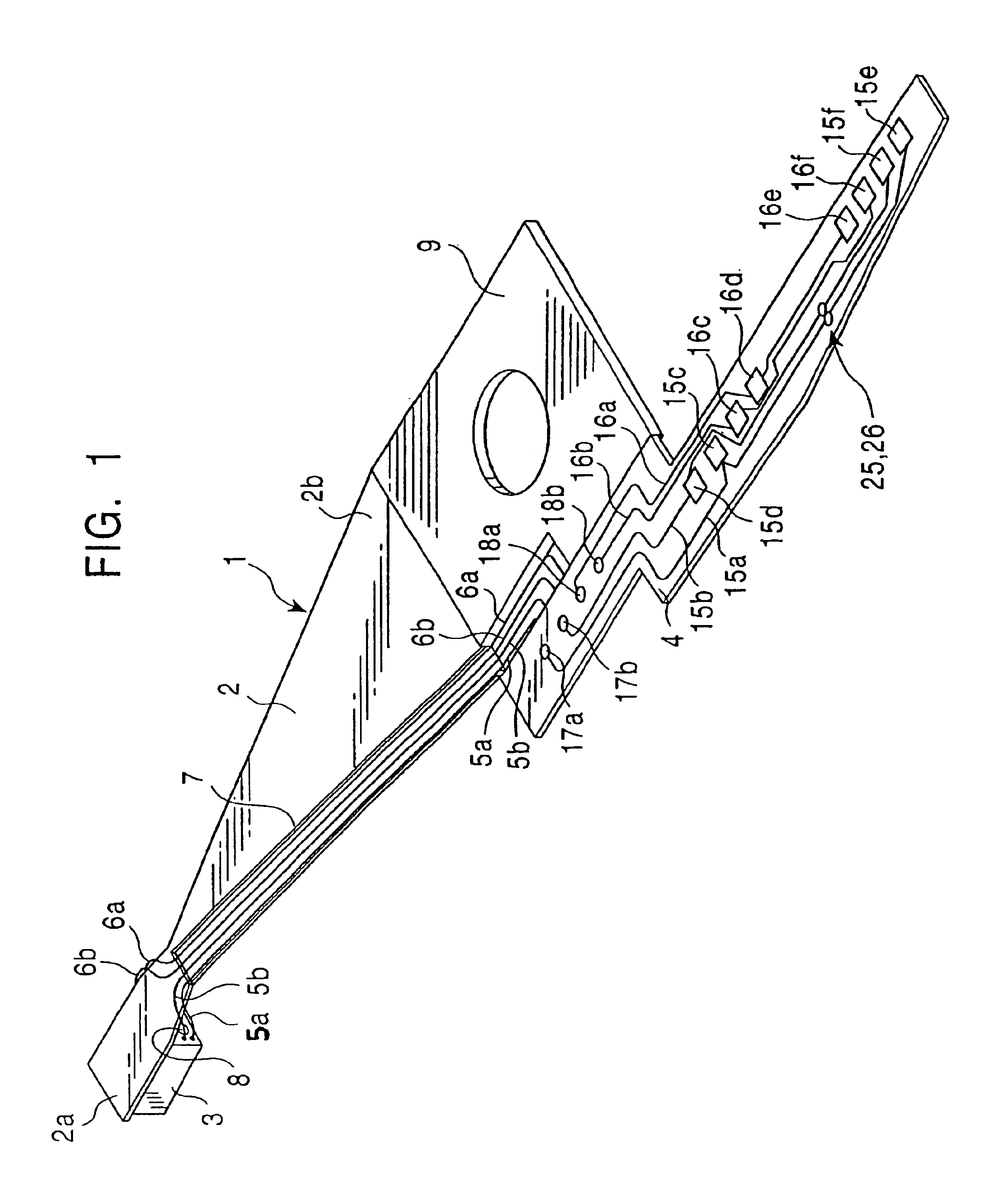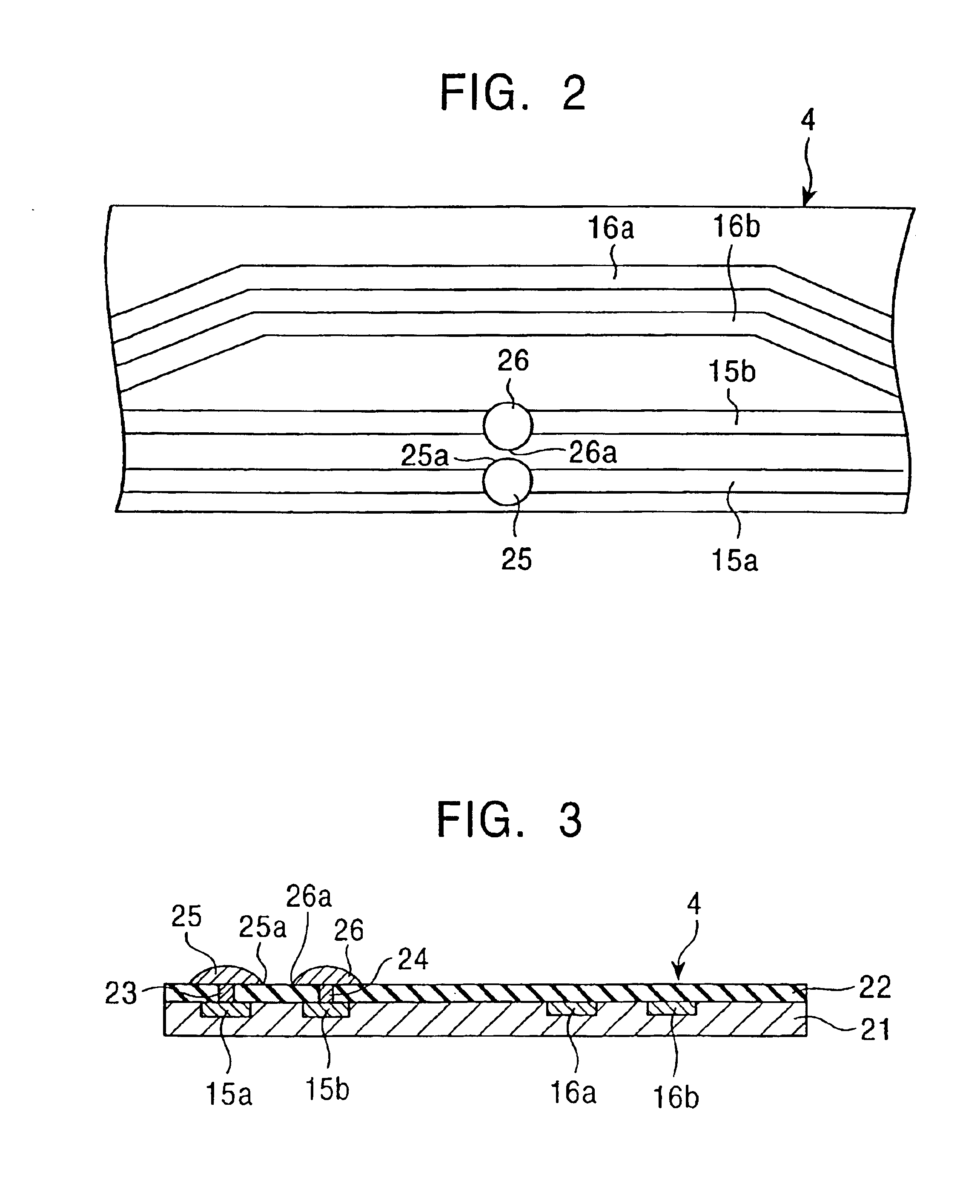Method for manufacturing a circuit board capable of protecting an MR magnetic head therein against electrostatic breakdown and a method for manufacturing a magnetic head using the same
a technology of mr magnetic head and circuit board, which is applied in the direction of manufacturing tools, soldering devices, instruments, etc., can solve the problems of overlapping and spreading of the peripheral portions of the solder bump, and achieve the effect of reducing the load required for crushing the solder bump, and avoiding damage to the circuit board
- Summary
- Abstract
- Description
- Claims
- Application Information
AI Technical Summary
Benefits of technology
Problems solved by technology
Method used
Image
Examples
experimental example 1
[0087]A land was formed on a circuit board, and a substantially semispherical solder bump having a diameter of 0.32 mm (320 μm) and a maximum height of 28 μm was formed on the land.
[0088]Further, on another circuit board, a substantially semispherical solder bump having a diameter of 0.26 mm (260 μm) and a maximum height of 25 μm was formed in a similar manner to the above. The solder used was made of an SnPb alloy and had the melting point of 183° C.
[0089]These solder bumps were each crushed by applying a load of 5-15 kgf, and changes in the bump diameter were measured. Measured results are shown in FIGS. 14 and 15.
[0090]As seen from FIG. 14, the diameter of the solder bump having a diameter of 320 μm was changed to 450-490 μm after the crushing.
[0091]Also, as seen from FIG. 15, the diameter of the solder bump having a diameter of 260 μm was changed to 370-430 μm after the crushing.
[0092]It is thus understood that, when the solder bump is crushed, the bump diameter is increased and...
experimental example 2
[0093]Next, a circuit board including one pair of solder bumps, as shown in FIGS. 1 to 3, was fabricated. The solder bumps each had a diameter of 0.32 mm and the center-to-center distance between the solder bumps was 0.4 mm. The solder used was made of an SnPb alloy and had a melting point of 183° C.
[0094]First, one solder bump was crushed by heating the solder bump up to 220-260° C. for 1.0-2.5 seconds, under a load of 8 kgf with a heater tip, while the heater tip was moved in rubbing fashion in the planar direction of the circuit board. The other solder bump was then crushed in a similar manner.
[0095]Continuity between both the solder bumps was subsequently checked. Checked results are listed in Table 1 and shown schematically in FIGS. 16a-d. FIGS. 16a-d shows the solder bumps in successive states when crushed while being heated to a temperature of 250° C.
[0096]As seen from Table 1 and FIG. 16a, when the heating time is 1.0 second at the heating temperature in the range of 170-250...
PUM
| Property | Measurement | Unit |
|---|---|---|
| melting point | aaaaa | aaaaa |
| to-center distance | aaaaa | aaaaa |
| center-to- | aaaaa | aaaaa |
Abstract
Description
Claims
Application Information
 Login to View More
Login to View More - R&D
- Intellectual Property
- Life Sciences
- Materials
- Tech Scout
- Unparalleled Data Quality
- Higher Quality Content
- 60% Fewer Hallucinations
Browse by: Latest US Patents, China's latest patents, Technical Efficacy Thesaurus, Application Domain, Technology Topic, Popular Technical Reports.
© 2025 PatSnap. All rights reserved.Legal|Privacy policy|Modern Slavery Act Transparency Statement|Sitemap|About US| Contact US: help@patsnap.com



